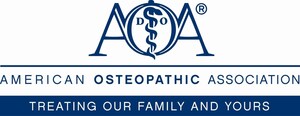Bath Salts Label Used to Disguise an Increasingly Popular Drug
CHICAGO, Oct. 16, 2012 /PRNewswire-USNewswire/ -- Last week a man reportedly interrupted a Tennessee church service, clutching a hammer and saying he was high on bath salts. Although he did not hurt anyone, the incident is reminiscent of the grisly attack in Miami earlier this year when a man falsely rumored to be high on bath salts bit and tore the flesh off of another man's face. Together, these incidents highlight the confusion that surrounds a new category of mood- and behavior-altering synthetic drugs that, while advertised as bath salts, contain no legitimate home-spa therapy ingredients and are bought by individuals who intend to use them to get high.
During a presentation at the American Osteopathic Association's (AOA) OMED 2012, the Osteopathic Medical Conference & Exposition in San Diego, Marla Kushner, DO, who treats teens dealing with addiction in her private medical practice in Chicago, asserts that there are indications bath salt drug use is increasing. Citing data from the American Association of Poison Control Centers, Dr. Kushner notes that calls to poison control centers in the United States regarding exposure to bath salt drugs have drastically increased over the past three years with zero calls in 2009, 304 calls in 2010 and 6,138 calls in 2011.
While only time will tell if these types of calls will continue to increase, Dr. Kushner, a board-certified osteopathic family physician and addiction medicine specialist, points out that changes in federal drug laws have helped to make selling bath salt drugs illegal.
In July 2012, key ingredients in bath salt drugs, including methylene-dioxypyrovalerone, mephedrone and methylone, were officially categorized as schedule I substances, meaning they are now considered to have no legitimate medical purpose and require special licensing to be purchased or distributed. While many physicians like Dr. Kushner are hopeful this change will lead to fewer cases of bath salt drug use and addiction, Dr. Kushner cautions that many sellers are still successfully peddling the drugs over the Internet.
"Though the name would otherwise suggest, bath salt drug users typically inhale or snort the products," says Dr. Kushner. "Users are usually looking for a sense of euphoria or use the drugs as a substitute for other stimulants, looking for a cocaine-like high."
The reasons users give for taking bath salt drugs are numerous, adds Dr. Kushner. They also include sexual arousal, a heightened sense of music appreciation and hallucinations. However, she warns, these drugs are highly addictive and the adverse reactions can be very dangerous. They include:
- anxiety;
- agitation;
- paranoia;
- panic;
- violence;
- headache;
- suicidal thoughts;
- dry mouth;
- insomnia; and
- seizures.
Treatments for bath salt drug addicts are dependent on each patient's case but a treatment regimen, notes Dr. Kushner, may include a combination of the following:
- therapy with an addiction psychiatrist;
- completing a drug rehabilitation program;
- practicing sober living; and
- having a family support network.
While many of the treatments are similar to those used to treat patients with other addictions, Dr. Kushner emphasizes that the stories told by recovering bath salt drug users are cautionary tales of incomparable struggles.
"A patient with a history of drug abuse explained to me that he had no control when taking bath salts," recalls Dr. Kushner. "With another drug he said he could occasionally come down but on bath salts he could not do anything on his own. They were destroying his life."
About the American Osteopathic Association
The American Osteopathic Association (AOA) proudly represents its professional family of more than 100,000 osteopathic physicians (DOs) and osteopathic medical students; promotes public health; encourages scientific research; serves as the primary certifying body for DOs; is the accrediting agency for osteopathic medical schools; and has federal authority to accredit hospitals and other health care facilities. More information on DOs/osteopathic medicine can be found at www.osteopathic.org.
SOURCE American Osteopathic Association
WANT YOUR COMPANY'S NEWS FEATURED ON PRNEWSWIRE.COM?
Newsrooms &
Influencers
Digital Media
Outlets
Journalists
Opted In





Share this article